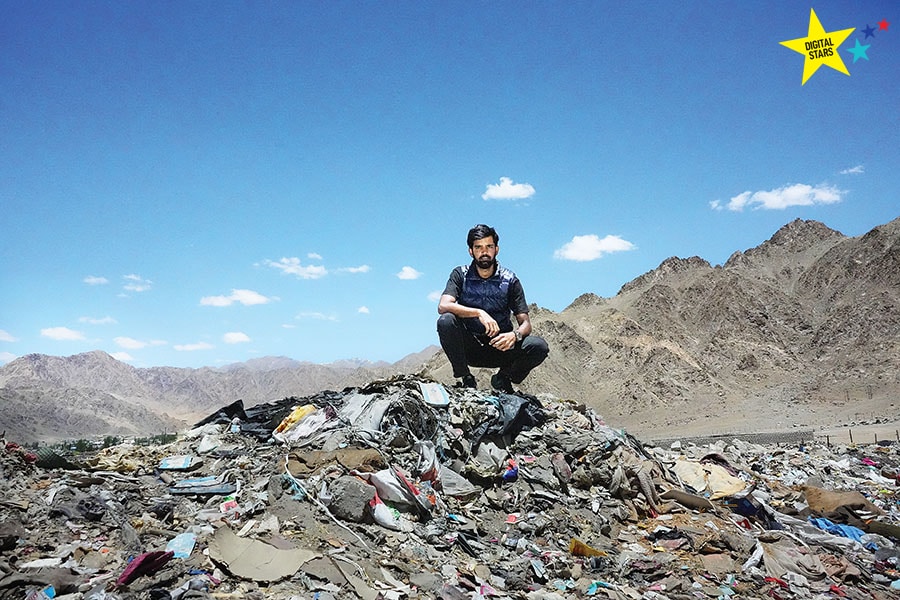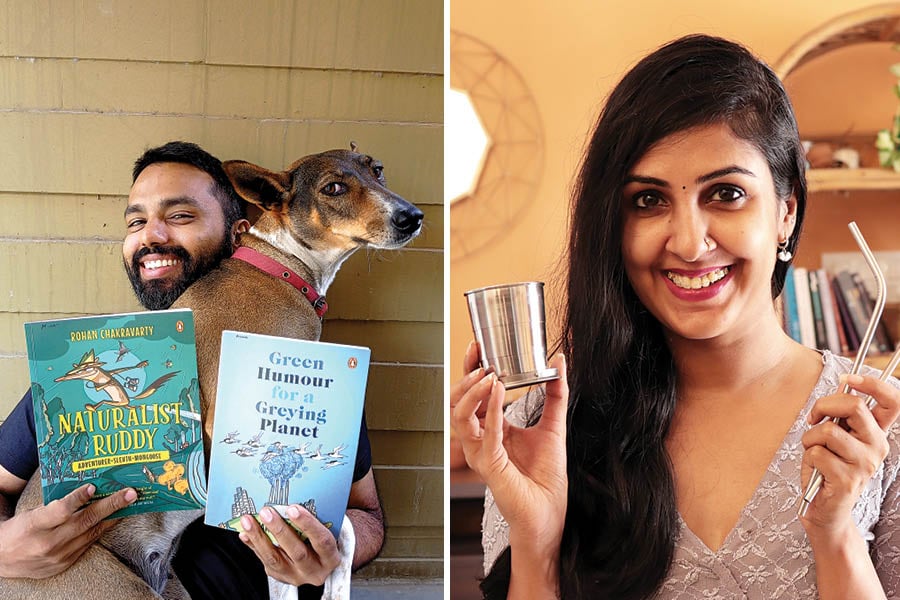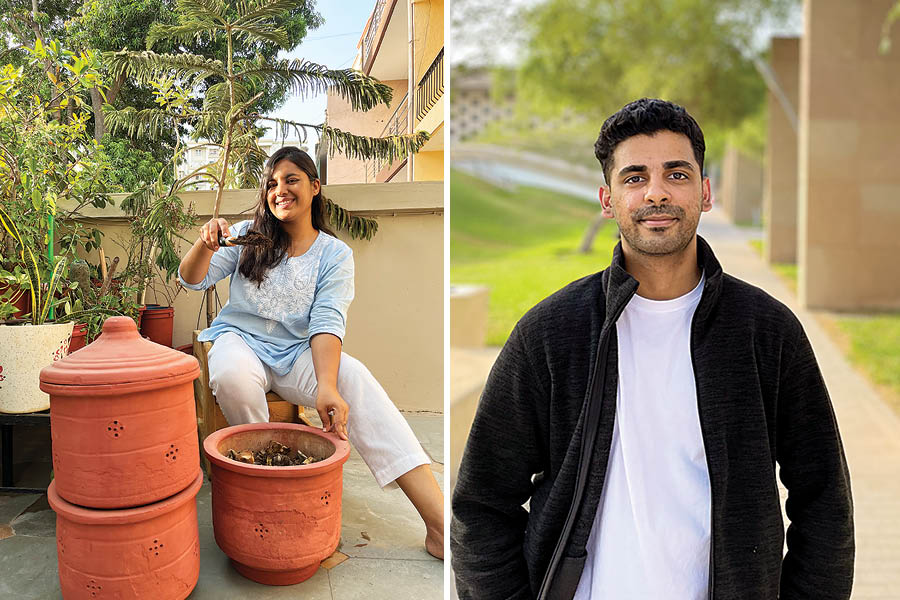
From Aakash Ranison to Rohan Chakravarty: Meet India's eco-warriors
Using comic strips, videos, photographs and reels, these eco-warriors are generating awareness about climate change and sustainable living among their followers
 Aakash Ranison was devastated to see plastic waste amidst the mesmerising beauty of Ladakh. Since then he has been creating content about the climate crisis
Aakash Ranison was devastated to see plastic waste amidst the mesmerising beauty of Ladakh. Since then he has been creating content about the climate crisis
It was in 2015 while travelling in Ladakh that Aakash Ranison was first confronted with the devastating effects of environmental degradation. As an avid traveller, he had been to many places in India where plastic litter and trash on roadsides was a common sighting. But when he saw plastic waste amidst the mesmerising beauty of Ladakh, he was shocked. It made him think of the countless problems that it can cause in the area—what if it’s left unmanaged, if it reaches water bodies and negatively affects them, and the various ways in which we are slowly inching towards a climate crisis. “That shock triggered something in me. From that day onwards, I couldn’t think of anything else but devoting all of my time and effort to advocating climate action and fighting for our environment,” says Ranison.
He started researching on climate issues and in 2017 began creating content about the same. His philosophy and approach to his content is to simplify the complexities of climate science for the layman so that more people can join the conversation and advocate for what is right. From videos explaining terms such as greenwashing—a form of marketing spin where companies purport to be environmentally conscious but in reality are not, to suggestions on what documentaries to watch on climate change and how much the tourism industry contributes to the climate crisis, he creates engaging content that can inspire people to participate and ask questions.
The 27-year-old climate action activist who hails from Indore, Madhya Pradesh, has been documenting and advocating sustainable living for five years now, and recently also published a book, Climate Change Explained: For One and All.
 Aakash Ranison is one of the many climate change foot soldiers in the digital world who are making a difference in the battle to save the environment. Through their creative content in the form of podcasts, videos, art, photographs and reels, these green influencers are constantly reminding people of the drastic effect that human activities have on the environment, and ways in which we can change them—one step at a time. And social media platforms are no longer just a source of fun and recreation, but are instead becoming a new place to learn, unlearn, and educate.
Aakash Ranison is one of the many climate change foot soldiers in the digital world who are making a difference in the battle to save the environment. Through their creative content in the form of podcasts, videos, art, photographs and reels, these green influencers are constantly reminding people of the drastic effect that human activities have on the environment, and ways in which we can change them—one step at a time. And social media platforms are no longer just a source of fun and recreation, but are instead becoming a new place to learn, unlearn, and educate.
Rohan Chakravarty is another such educator. Chakravarty started his career as a cartoonist in 2012, trying his hand at drawing cartoons on social issues and glamour. “I wasn’t enjoying it until wildlife happened to me, which came about in the form of a tiger sighting,” says Chakravarty, who uses a blend of art and humour to draw illustrations and cartoon strips around climate and wildlife conservation. The idea to use cartoons to bring forth information on wildlife conservation was also the seed for Green Humour—Chakravarty’s cartoon strip column on wildlife conservation, which started with Saevus magazine in 2012, and since 2017 is being published in several publications, including The Hindu Sunday. His work was also picked up by Gocomics, (an online platform of the Universal Press Syndicate), the first time a comic strip from India was syndicated globally.











